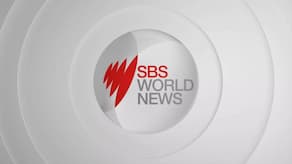The Reserve Bank has taken the unprecedented step of holding its cash rate at a record low for the entire year, with some economists now tipping a cut in 2015.
Until recently most economists believed the bank's next move would be a hike of a quarter of a percentage point.
But after RBA deputy governor Philip Lowe last week said the bank was in a position to cut the cash rate again if necessary, several experts now forecast rate cuts in the year ahead.
The futures market also indicates an increasing chance of the cash rate dropping below its current level of 2.5 per cent next year.
Deutsche Bank chief economist Adam Boyton believes the economy will not improve in the next year or two, and tips the cash rate will be cut twice in 2015 to 2.0 per cent.
"It's just that combination of some early signs of cooling in house price growth, weaker commodity prices over the past few months, combined with our expectation that the unemployment rate will rise to close to seven per cent next year," he said.
US-based funds manager AllianceBernstein last week said the next move in interest rates was likely to be down, and Saxo Bank chief economist Steen Jakobsen has said the cash rate would need to be cut, possibly as low as 1.5 per cent, as Australia heads into recession.
Tuesday's decision by the RBA board means the cash rate has been unchanged since August 2013, an unprecedented stretch for a record low rate, Commsec chief economist Craig James said.
"Clearly these are remarkable times," he said.
"The combination of low interest rates, low inflation and continued economic expansion clearly shows the success of the Reserve Bank's monetary policy strategy."
A notable difference in the statement issued by the RBA was the tougher language on the Australian dollar.
"A lower exchange rate is likely to be needed to achieve balanced growth in the economy," governor Glenn Stevens said.
Prior statements said the currency was offering less assistance to balanced economic growth "than would normally be expected".
The Australian dollar rose after the RBA's decision, adding half a US cent to an intra-day high of 85.43 US cents.
The RBA has previously said 85 US cents would be a good level for the Australian dollar, but that was before the iron ore price plunged, Westpac chief economist Bill Evans said.
He still expects the cash rate's next move will be up, during the second half of 2015, when there will be a stronger outlook for the world economy.

